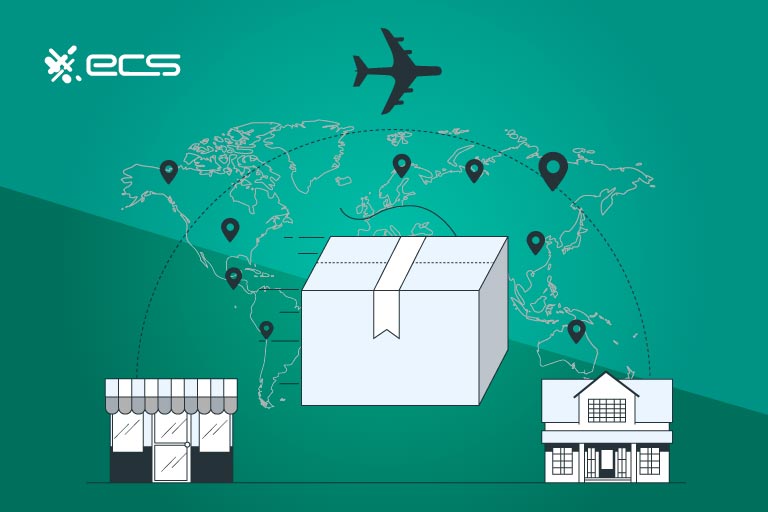In 2007, entrepreneur Tim Ferriss released The Four Hour Workweek. This landmark book was a study of creating passive income through several particular internet-based business models. One of the business models was all about selling products you didn’t actually own. The idea works like this: a customer makes an online payment for an order from your website, and although it appears to the customer that you are the product’s producer and seller, it is actually produced and stored by your supplier.
When an order comes in, you send an order to the supplier to ship it directly to the customer. You never need to keep an inventory because orders are placed as they come in. The products are white-labeled under your own brand.
This is called dropshipping. And unlike traditional retail (with an inventory), it has some unique online payment processing considerations.
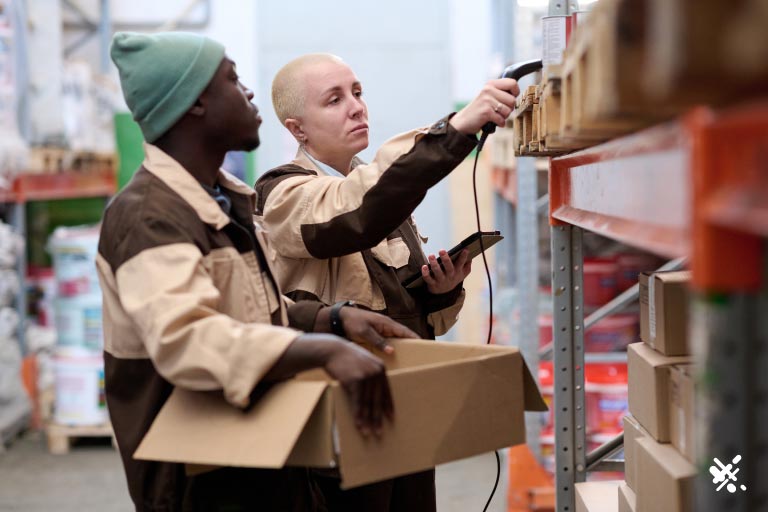
Dropshipping Industry Overview
Amazingly, around 23% of online store sales are filled through dropshipping. Consider that for a minute by comparing it to brick-and-mortar retail. Imagine going to the mall. There are displays in the store windows, but no products in any store: just empty space and lots of muzak.
It’s all quite mystifying. Finally, you decide to go into a store and check it out. You approach a cashier to ask about a specific article of clothing you saw on display. They tell you it is indeed in stock but must be shipped to you. You pay for the item, and a few days later, it shows up at your home.
That’s what dropshipping is. These online merchants are not carrying any stock. This information is not presented to the customer, as it’s irrelevant from their end regardless. Or maybe it is relevant. We’ll discuss that later. In any case, nearly one out of every four online product sales occur this way.
Around 33% of online stores use a dropshipping model. And it’s easy to see why: inventory requires resources like money and staffing. Some estimates suggest that dropshippers could earn 50% more revenue than merchants with an on-site inventory. This is why the dropshipping industry is set to surpass a $372.47 billion market valuation by 2025.
Consumers: I Want it Now!
About 34% of Amazon sales are fulfilled by dropshippers, contributing more than $96 billion to Amazon’s revenue. Amazon has noticed this trend and has devised a way to direct dropshippers towards a particular fulfillment model: FBA or fulfillment by Amazon.
FBA allows Amazon to enact more quality control over the dropshipping process. It also allows them to increase their revenue by charging Amazon sellers to store inventory and fulfill orders. Today, a whopping 94% of Amazon sellers use FBA. Only 6% of Amazon sellers aren’t using FBA because FBA allows merchants to participate in one-day shipping through Amazon Prime.
One-day shipping is a huge customer motivator. 72% of Amazon Prime’s 200 million subscribers cite unlimited free shipping as their biggest motivator for Prime, and 24% of subscribers specifically cite the importance of Prime’s two-hour shipping option. Other studies have shown that one-day shipping can increase a company’s competitive edge by 85%.
In broad strokes, FBA works like this: you send your inventory to Amazon. Amazon stores it in one of its 1,400 warehouses. As orders come in, Amazon fulfills the order for you by packaging and shipping it.
As you can see, the FBA dropshipping model does require you to have some initial inventory. But once you’ve shipped it to Amazon, it’s the type of hands-off business that makes dropshipping so appealing to so so many small business owners.
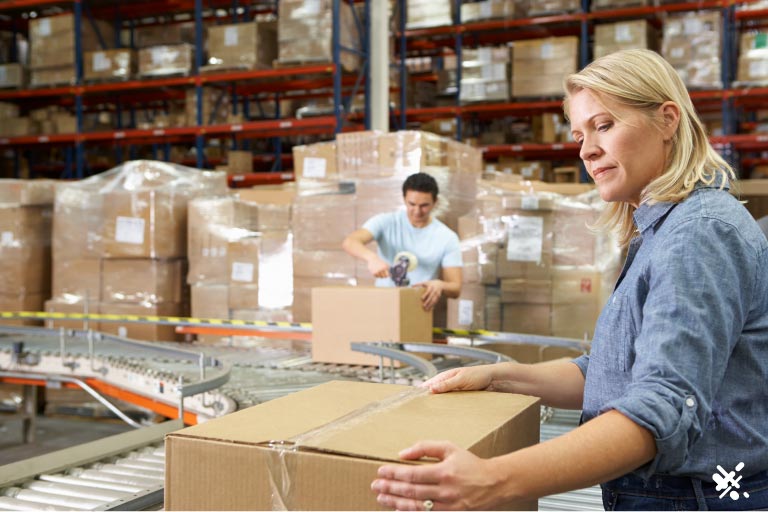
Do FBA Sellers Make a Profit?
Around 17% of FBA sellers make less than $500 monthly. Approximately 17% are making between $1,001 and $5,000. 8% are making between $50,001 and $100,000. And only 1% are making more than $251,000. Around 22% of FBA sellers see a profit within three months. 19% see it within six months to one year. And approximately 76% of them claim to spend just 4 hours a week or less, making them living embodiments of the prophecy of Tim Ferriss.
As you can see, it’s a real mixed bag. FBA enthusiasts will point to the most successful demographics to corroborate their presentation of FBA as an internet goldmine. Speaking of gold, the internet has become a sort of 21st-century Wild West. Internet gurus are arguably the snake oil salesmen of today, selling pipe dreams of wealth, love, and beauty.
Are business gurus touting FBA selling a deceptive product? According to the above-cited studies, roughly 44% of sellers make less than $5,000 monthly (and 27% make less than $1,000).
Numbers like this indicate that FBA is a side hustle for many participants. And some of them are fine with that. But what about business owners that want to make dropshipping a full-time venture?
Behold: let us consult the ancient tomes of internet wisdom, which surely outshine the Great Library of Alexandria (at least in quantity and cat-related memes). You will find ample ink spilled about the pitfalls of FBA directly from disillusioned business owners. And one of their biggest complaints is the fees. Storage fees. Transaction fees. Shipping fees.
The True Cost of FBA
Amazon likes to punish the “lazy.” One can even picture Jeff Bezos standing with a whip over a row of galley slaves, commanding them to row (true, he’s no longer the CEO, but he cuts a commanding figure). Individual sellers selling less than 40 items each month are punished with additional fees. Sell, ye peans, or receive the lick of leathery justice!
Starting Fees
Now, on to those selling more than 40 items per month. You will have to pay $39.99 for starters…just for the privilege of using a super-confusing seller dashboard that’s surprisingly lofi for one of the world’s largest tech companies. Did someone click through an affiliate link to find your product? That will be another 8% to 15% (or higher for select items).
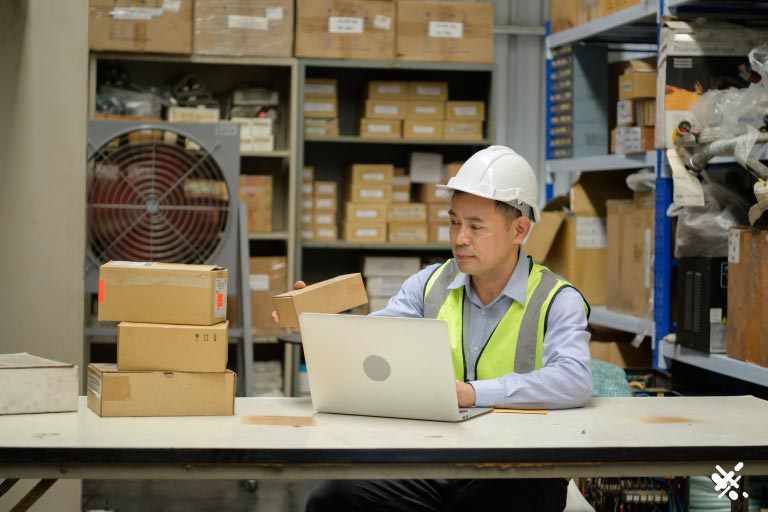
Fulfillment Fees
Now, on to the fulfillment fees. These will range from $3.22 to $7.17. Oversize items can go up to $158 and change. No, we’re not done yet. There’s storage as well. You can expect to pay $0.87 per cubic foot from January to September. And during the sizzling retail holiday season from October to December, expect the rate to go up to $2.40 per cubic foot.
Miscellaneous Fees
We have not even covered all the fees. There are also long-term storage fees to punish slow-moving merchandisers. But even without covering these additional fees, one can see that this pricing model is simply ridiculous. No business owner would put up with this kind of pricing. Or would they?
To be fair, FBA makes selling incredibly convenient. And because your merchandise can now ship through Prime, you will get more exposure. For some dropshippers, Amazon FB is the way to go. For others, FBA is a nightmare, even beyond pricing.
Amazon may commingle your inventory with other merchants for certain generic items (you can opt out of this, but it’s a default setting). This means if the item “you” are selling is also at a different FBA center closer to the end customer, it will be shipped from there instead of your stash.
Nothing wrong with that, of course…unless the other items are actually of a worse quality. The customer, then, gives you a bad review upon getting this poor-quality item.
Aside From Fees: Other Problems With FBA
There are plenty of other problems with FBA outside of pricing. Another one is branding. FBA items arrive in Amazon-branded shipping material. In fact, the whole experience makes the customer feel like they are shopping from Amazon, not your brand.
While interesting, this article is not the place to discuss seller disappointments with FBA. Our main goal is to discuss online payment methods. So what does FBA have to do with choosing a payment gateway?
With FBA, Amazon manages the point of sale, collecting payment information from the customer and accepting online payments. The online payment gateway Amazon provides is built into your FBA fees—monthly and point-of-sale fees. There’s a certain amount of convenience there, but it comes at a serious cost.
Merchants might think they can escape the punitive fees of FBA by using a different platform. Shopify, eBay, and Etsy are a few options. Some options directly integrate with suppliers, such as AliExpress.
Some are geared toward specific industries. Printful, for example, allows artists to sell shirts, posters, and home goods. This print-on-demand model means that orders are printed when they come in—there is no need to store anything.
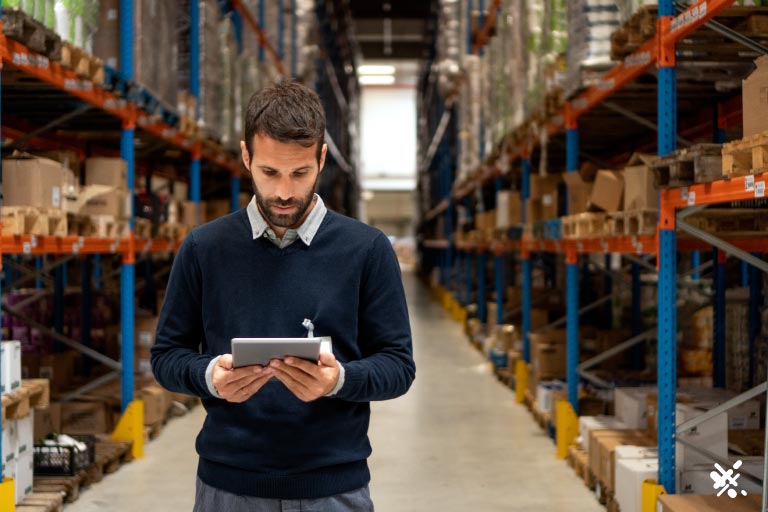
Why You Need Your Own Payment Processor
But all of these models will have one key pitfall: you must rely on the platform to receive payments. For merchants with a low sales volume, this is not such a problem. Amazon, Shopify, or eBay are your all-encompassing eCommerce gateway. There’s no need to worry about having your own online payment portal.
But what happens when you reach a more normative sales volume? These platforms may serve a role in your overall channel management, but they can no longer be your main storefront. You could use platforms like Amazon to gain some peripheral sales and generate brand recognition. But now, you will want to have your own payment option.
Some eCommerce entrepreneurs estimate that Amazon FBA fees may eat away 10% to 15% of your revenue. This isn’t much worse than the 9% to 14% that some business managers suggest be spent on logistics.
But don’t forget that Amazon will also take referral fees out of your revenue and that a significant portion of Amazon purchases are made through referrals. Then there are the storage fees. The slow-moving inventory fees. Oversize fees. And the monthly fee is just for the privilege of selling on Amazon.
You do not have to pay any of these fees if you store and ship the inventory yourself. Of course, you will have to pay for storage and shipping. But you won’t have to pay for referrals. You can find and negotiate shipping deals on your own and storage and inventory management. But you may still be wondering how you will collect credit and debit card info.
How Payment Processing Works
Here is where a payment processor comes into play.
Payment Processor
A payment processor is a company that provides online payment gateways or POS systems (for physical stores). They will provide merchant account services to funnel customer payments into your business bank account. And they will also help you maintain PCI compliance (payment card industry) so that banks and card issuers will allow you to accept payments from their customers.
A payment processor provides the hardware and software for customers to provide credit card info or make a payment from something like Google Pay or Apple Pay. The card information is then sent to card networks (Visa, Mastercard, Discover, Amex), which contact the customer’s bank. The purchase can be completed if the customer has enough cash or credit. Within 24-48 hours, the funds are settled into your account.
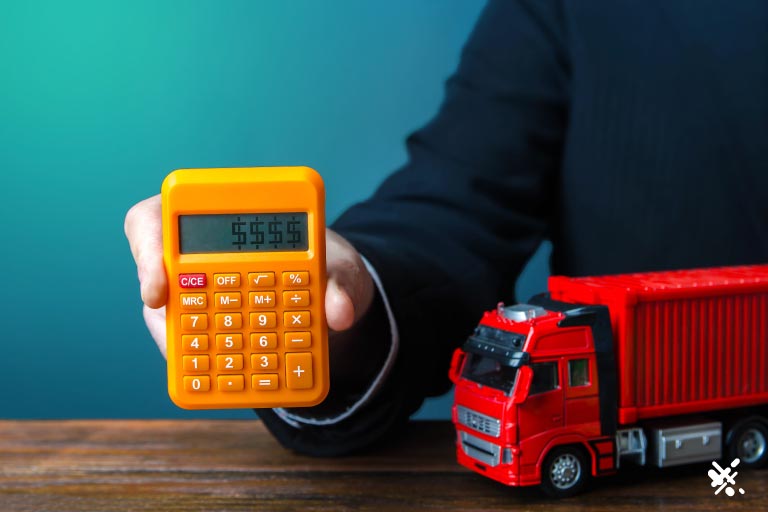
Cost
What’s the cost of all of this? With something like interchange plus pricing, it’s usually between 2-3%. There are too many variables to cover every type of industry, but in most cases, these payment processing fees, combined with shipping, will beat FBA fees, referral fees, storage fees, and surprise fees.
All right, we’ll look at one example. Let’s say you’re selling something that (for the sake of a convenient example) is one cubic foot. If it sits for three months between October and December and weighs less than 4 oz, it will already cost you $11.06.
If someone clicks on a referral link, it will cost you an additional 8% (home electronics). Let’s say we’re talking about a $20 coffee maker, so that’s an additional $1.60 for $12.66 all day. But then there is the FBA account fee, which is $40. Let’s say you sell 100 per month, so that’s an additional $0.40 for $13.06.
Wow! That’s more than 50% of the price of the coffee maker, making this venture totally not worth it. Of course, you’re not factoring shipping into the price. For one, that’s supposed to be part of the FBA fee. And two, you’ve got to compete with the ten thousand other people selling the same coffee maker.
In any case, with a payment processor, you would be paying about $0.60 per sale. While you would have to pay for shipping, you could pass that cost on to the customer instead of being bullied into giving them free shipping. Again, this example is far from exhaustive. But generally, merchants with a higher sales volume will save money doing their fulfillment and payment collection.
Chargebacks
Chargebacks are a concern for all merchants. However, online merchants are one type of business that is more susceptible to chargebacks. A chargeback is when a customer initiates a dispute with their bank or card issuer instead of asking the merchant for a refund.
Unrecognized Merchant Name
There are several reasons why online merchants are susceptible to chargebacks. One is that online merchants may sell their products under a different name than the name that is on the customer’s bank statement. This is particularly true for products that are supposed to be delivered discretely or if the online business is part of an umbrella business.

Friendly Fraud
Another reason is that the customer will claim the online payment was completed without their knowledge of approval. This can happen in households with multiple people. Sometimes the dispute is honest (the customer really did not approve the purchase), while other times, it is called “friendly fraud.” The customer intended to order the product…they just didn’t want to pay for it. Unfortunately, friendly fraud is a growing trend, somewhat strengthened by consumer protection laws.
Delayed Fulfillment
But there is another issue causing chargebacks that are particularly apropos to dropshipping. Remember that a dropshipper does not actually have a product in their inventory. They are waiting for the manufacturer to fulfill and ship the order. That leaves the fulfillment outside of their control. If the manufacturer is delayed, the customer will get their item late.
This will create a negative experience for the customer. They may claim the item took too long and are no longer interested. They may even pocket the item for good measure.
Alternatively, if the product takes too long, they may initiate a chargeback before it even arrives. Incidentally, this is one reason that dropshippers must find good manufacturers to work with—ones who can be relied on to ship things on time.
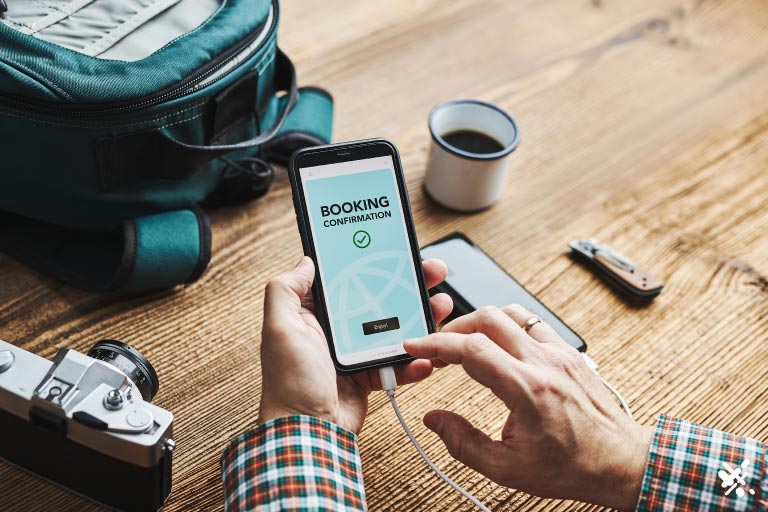
Preauthorizations For Online Payments in Dropshipping
A payment processor can help avoid this issue and facilitate payment collection in general. This can be done with the use of preauthorizations. Generally, a preauthorization is best when the merchant is unsure of the final amount the customer will pay.
Examples include:
a restaurant tab (augmented by a tip)
a hotel booking (perhaps augmented by collecting the deposit)
a rental car (returned without gas).
In all these cases, the merchant will use a preauthorization to place a hold on the customer’s account with the assistance of the customer’s financial institution. The merchant has a time frame to settle the total amount, or the hold will “drop off.”
Another common reason for using a preauth is to ensure the customer has a legitimate bank account or credit line. It may also be used to ensure they can cover the amount in question, even if it’s less than the preauth amount.
A gas station may charge a customer $50 until the actual amount is settled to make sure the customer can pay. Or they may charge the customer $1 to see if they have available credit, knowing that if they do, their bank will let the cardholder go over the credit limit at the gas pump.
Preauths: Deflecting Chargebacks, Preventing Fraud
Either way, it’s about ensuring the customer is “in the money.” But preauths can also be used to help deflect chargebacks. A dropshipping merchant can issue a hold on a customer’s account once they’ve checked out with their shopping cart. The preauth can linger on the account until the customer receives the merchandise.
This builds a powerful case against the customer if they initiate a chargeback. When a customer initiates a chargeback, their bank does reach out to the merchant to get their side of the story.
The merchant can point to the preauth and say: “Look, the customer let this preauth hold linger on their account for five days before doing anything about it.” For chargebacks attributed to an unauthorized purchase, this strategy is advantageous.
But the merchant can also use the preauth to reduce fraud-related chargebacks. When “authorization” and “capture” are (essentially) simultaneous, the merchant has no time to review the purchase.
But with a preauth, they can review the order and see if anything is suspicious. If it seems legit, the order can proceed. If it does not, the merchant can follow up with the customer and cancel the order. In cases of genuine fraud, this will prevent the actual cardholder from filing a chargeback dispute.
Online Payment Processing For Dropshipping: A Final Take
Dropshipping is a good business model for businesses that want to reduce overhead. All the same, the particular strategy creates its own set of challenges. Dropshippers must find reliable suppliers. They must navigate a world of fulfillment platforms and fees.
Once dropshippers reach a particular volume, they’ll likely save money by leaving the platforms and shouldering some logistical costs alone. Among these is online payment processing. Payment processing for dropshipping does necessitate some unique considerations, like thinking about chargebacks and perhaps using preauthorizations.
If you have any questions about online payment processing and merchant services solutions for dropshippers, call or fill out the form below. We’d love to hear about you, your business, your sales volume, and your challenges and discuss how we can help improve your profit margin with more cost-effective payment processing.
